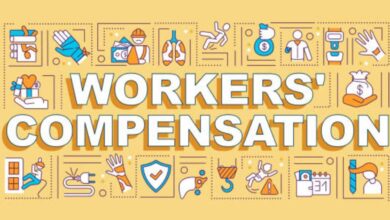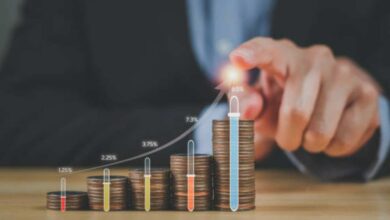Climate Change and Its Impact on Business Risk Management
Exploring Physical, Transition, and Liability Risks in Climate Change

Climate change is a big problem that affects everyone, including businesses. The weather is changing a lot, and this can be very dangerous. It can cause big storms, floods, and fires. This makes it harder for businesses to work and grow.
Companies must be ready for these changes. They need to make plans to keep their workers and buildings safe. Therefore, this is called risk management. If they don’t, they could lose a lot of money.
Thus, Climate change matters a lot for businesses. It can make it hard to get supplies or deliver products. For example, if a big storm hits, roads can be blocked. This means trucks can’t bring goods to stores.
Customers might not be able to buy what they need. This can make people unhappy and choose other stores instead. Also, fixing damages can be very expensive. Companies might need to pay more for insurance, too. So, businesses must consider climate change when planning for the future.
Furthermore, to be safe, companies need to be smart and plan. They can use special tools and maps to see where problems might happen. They can also train workers to handle emergencies. This way, they can keep their business running even when the weather is bad. Planning well helps companies to stay strong and keep customers happy.
Comprehending the Dangers of Climate Change
Climate change brings many dangers to our world. These dangers are called risks. They can affect our lives, homes, and businesses. Meanwhile, Understanding these risks helps us prepare and stay safe. There are three main types of risks: physical, transition, and liability risks. Each type has different challenges we need to know about.
Physical Risks
Physical risks are dangers we can see and feel. They happen because the weather is changing.
- Firstly, Extreme weather events are big storms, floods, and heatwaves. These can damage homes and roads. They make it hard for people to travel and work. Consequently, we need to build stronger buildings and have emergency plans to stay safe.
- Sea level rise means the ocean is getting higher. This can flood cities and towns near the coast. People might have to move to safer places. Meanwhile, We need to build walls and barriers to keep the water out.
- Resource scarcity happens when we don’t have enough water or food. Droughts and bad weather can hurt farms. This makes it hard to grow crops. We need to save water and find new ways to grow food.
Transition Risks
Transition risks come from changes we make to fight climate change. These changes can affect businesses and jobs.
- Regulatory changes are new rules made by governments. These rules help reduce pollution and protect the environment. Businesses need to follow these rules, which can be costly. We need to help companies adjust to these changes.
- Market shifts happen when people change what they buy. More people want clean energy and eco-friendly products. Businesses need to change what they sell to meet these new demands. Consequently, this helps reduce pollution.
- Subsequently, Technological innovations are new tools and machines. These help us use energy more wisely and reduce waste. Businesses need to invest in these new technologies. This helps protect the environment and create new jobs.
Liability Risks
Liability risks are dangers that come from being blamed for problems caused by climate change.
- Legal actions and litigation happen when people or companies get sued. They can be blamed for causing pollution or not protecting the environment. Businesses need to follow laws and be careful to avoid these problems.
- Reputational damage happens when people think badly of a company. This can happen if a business doesn’t care about the environment. People might stop buying their products. Businesses need to be responsible and show they care about the planet.
Furthermore, By understanding these risks, we can better prepare for the future and protect our world.
Assessing the Impact of Climate Change on Businesses
Climate change is making a big impact on businesses everywhere. It changes how companies work and what they need to do to stay successful. Meanwhile, By understanding these impacts, businesses can better prepare for the future. There are many ways that climate change can affect different types of businesses and places.
Read Also: Innovative Strategies That Drive Business Success
Sector-Specific Risks
Different industries face unique risks because of climate change. Each sector has its challenges and needs special solutions.
- Firstly, Agriculture and food production are very sensitive to weather changes. Extreme weather can destroy crops and hurt farmers. Droughts and floods make it hard to grow food. Farmers need to find new ways to protect their plants and animals.
- Energy and utilities are also affected by climate change. Hotter temperatures can make it harder to produce and supply energy. Power lines can get damaged by storms. Consequently, companies need to use clean energy sources like wind and solar to keep providing power.
- Subsequently, Manufacturing and supply chain businesses can face big problems, too. Factories might get flooded, and roads might get blocked. This makes it hard to get materials and deliver products. Businesses need to have backup plans and build strong, safe factories.
Geographic Vulnerabilities
Climate change impacts different places in different ways. Some areas are more vulnerable than others.
- Coastal regions are at high risk because of rising sea levels. Flooding can damage buildings and homes near the coast. People might need to move to higher ground. Communities need to build barriers to keep the water out.
- Urban areas, or cities, can also be greatly affected. Meanwhile, heat waves can make cities very hot and uncomfortable. Storms can cause power outages and traffic problems. Cities need to create green spaces and improve their infrastructure to stay safe and cool.
- Developing countries face many challenges due to climate change. They might not have the resources to handle big storms or droughts. This can make life very hard for people living there. These countries need help from richer nations to build stronger communities and protect their people.
Developing a Climate Risk Management Strategy
Developing a climate risk management strategy is essential for businesses today. This plan helps companies prepare for the impacts of climate change. It involves looking at risks, making smart decisions, and setting goals. By doing this, businesses can stay strong and successful even when the weather changes.
Conducting Climate Risk Assessments
Conducting climate risk assessments is the first step. It means finding out how climate change can affect your business.
- Firstly, Identifying vulnerabilities is about finding weak spots. Businesses need to look at what parts of their operations are at risk. For example, are their buildings safe from floods? Consequently, knowing these weaknesses helps in making better plans.
- Evaluating the probability and impact of risks means understanding how likely these risks are and how bad they can be. Subsequently, Businesses need to think about different scenarios. For instance, how often might a big storm happen? What damage could it cause? This helps in prioritizing which risks to focus on.
Integrating Climate Risks into Business Planning
Integrating climate risks into business planning is crucial. It means including these risks in all business decisions.
- Strategic planning and decision-making involve thinking about the future. Businesses need to consider climate risks when planning their strategies. This can include choosing safer locations for new buildings or investing in green technology.
- Scenario analysis and stress testing are about preparing for different situations. Meanwhile, Businesses can create different “what if” scenarios, like what if there is a long drought? They test how these scenarios affect their operations. This helps them be ready for anything.
Setting Objectives and Goals
Setting objectives and goals is the final step. It means deciding what the business wants to achieve.
- Firstly, Short-term and long-term targets are important for staying on track. Meanwhile, Short-term targets might include using less energy in the next year. Long-term targets could be becoming completely green in ten years. Consequently, these goals keep the business focused on improving.
- Alignment with sustainability goals ensures that business plans support a healthy planet. Subsequently, Companies should align their goals with global sustainability efforts, like reducing carbon emissions. This helps protect the environment and shows customers that the business cares.
Implementing Climate Risk Mitigation Measures
Implementing climate risk mitigation measures is about taking action to reduce the dangers of climate change. Businesses can do many things to stay safe and protect the environment. These actions help companies keep running smoothly, even when the weather changes.
Enhancing Operational Resilience
Enhancing operational resilience means making your business strong and ready for anything. This involves improving buildings, supply chains, and emergency plans.
- Infrastructure improvements are about making buildings and equipment stronger. Businesses can build stronger roofs and walls to protect against storms. They can also use better materials that last longer. This helps keep everything safe.
- Meanwhile, Diversification of supply chains means having different sources for materials and products. If one supplier is affected by bad weather, another can still provide what’s needed. This way, businesses don’t run out of supplies and can keep working.
- Emergency preparedness and response plans are important for safety. Businesses need to have plans for what to do in case of floods, fires, or storms. This includes training workers and having emergency kits. Being ready helps everyone stay safe and calm.
Adapting Business Models
Adapting business models means changing how businesses operate to be more sustainable. This includes using green technologies, sustainable practices, and finding new markets.
- Firstly, Investing in green technologies helps businesses use less energy and reduce pollution. This can include solar panels, wind turbines, and energy-efficient machines. Meanwhile, Green technologies save money and protect the environment.
- Shifting to sustainable practices means changing daily operations to be eco-friendly. Businesses can use less water, recycle more, and reduce waste. Consequently, these practices help the planet and attract customers who care about the environment.
- Subsequently, Exploring new market opportunities is about finding new ways to grow. Businesses can look for markets that need green products or services. This can include eco-friendly packaging or clean energy solutions. New markets help businesses expand and stay competitive.
Engaging Stakeholders
Engaging stakeholders involves working with others to fight climate change. This includes governments, NGOs, investors, customers, and employees.
- Collaborating with governments and NGOs helps businesses follow laws and get support. They can work together on projects that protect the environment. This partnership helps businesses meet their goals and stay compliant.
- Communicating with investors and customers builds trust. Meanwhile, Businesses need to share their climate plans and progress. This makes investors feel secure and customers proud to support the business.
- Meanwhile, Employee training and awareness programs teach workers about climate risks and solutions. Subsequently, Training helps employees know what to do in emergencies and how to work sustainably. Informed workers make the business stronger and more resilient.
Monitoring and Reviewing Climate Risk Management Practices
Meanwhile, Monitoring and reviewing climate risk management practices is important for making sure everything works well. This means keeping track of what businesses do to handle climate change and checking if these actions are effective. It helps businesses stay on the right path and make improvements when needed.
Continuous Monitoring and Reporting
Continuous monitoring and reporting help businesses see how well they are managing climate risks. This involves looking at specific measures and sharing the results.
- Key Performance Indicators (KPIs) are numbers that show how well a business is doing. For climate risk management, KPIs might include how much energy a company saves or how many green projects they start. Consequently, Tracking KPIs helps businesses see their progress and set new goals.
- Environmental, Social, and Governance (ESG) reporting is about sharing information on how a business cares for the planet and people. Subsequently, Businesses report on their efforts to reduce pollution, support communities, and follow good practices. ESG reporting builds trust with customers and investors.
Regular Audits and Reviews
Regular audits and reviews are checks to see if climate risk management plans are working well. This helps businesses find out what’s good and what needs improvement.
- Firstly, Assessing the effectiveness of mitigation measures means checking if the actions taken to reduce climate risks are successful. Businesses look at how well their plans work during real events, like storms or heat waves. If something doesn’t work, they can make changes to improve it.
- Subsequently, Adapting to new information and trends is crucial for staying prepared. The climate and technology are always changing. Businesses need to update their plans based on the latest data and new tools. This helps them stay ahead and be ready for future challenges.
By monitoring and reviewing their climate risk management practices, businesses can ensure they are doing their best to protect themselves and the environment. This continuous effort helps them remain strong and successful.
The Future of Climate Risk Management
The future of climate risk management is exciting and important. New trends and technologies are helping us fight climate change. Meanwhile, Scientists and engineers are making new tools to predict the weather and keep us safe. For example, they use satellites to watch the Earth and warn us about storms. Consequently, these tools help us prepare better and protect our homes and businesses.
Governments also play a big role in climate risk management. They make rules and policies to keep people safe. Subsequently, these rules tell companies how to build strong buildings and use clean energy. This helps reduce the damage from floods and fires. By following these rules, everyone can be safer and healthier.
Preparing for an uncertain future is key. We don’t know exactly how the climate will change, but we can get ready. We can make plans to deal with different problems, like big storms or droughts. Families can store food and water for emergencies. Schools can teach kids what to do if there’s a flood. When everyone works together, we can face the future with confidence.
Conclusion
Climate change is a big problem for businesses because it can cause many problems. We learned that extreme weather like storms and floods can hurt buildings and make it hard to work.
Businesses need to be ready with plans to keep everyone safe and keep working. It’s also important to think about how climate change affects different industries like farming and energy. They need special plans too, to grow food and make energy without hurting the planet.
Meanwhile, Managing climate risks helps businesses stay safe and keep working well. They can use new technologies and work with others to protect the environment. By planning and making smart choices, businesses can be strong even when the weather changes.
Everyone needs to learn about climate change and how it affects businesses. If you have any questions or thoughts, please share them in the comments below. Don’t forget to tell your friends about what you’ve learned so they can help too! Together, we can make a big difference for our planet and businesses everywhere.







